Australia, November 2009
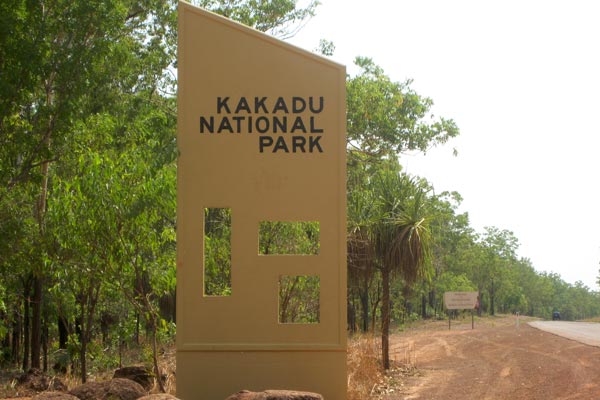
Kakadu National Park was our main destination in the Top End. I had hoped that we would be seeing frillies periodically as we drove along its long roads. Unfortunately, it turned out that we had arrived too early for the 2009/2010 rainy season, and that rainstorm we had experienced at Fogg Dam was the only one of our trip. So Kakadu was quite dry, and other than on the road signs, the frillies were nowhere to be seen.
In addition to frilled lizards, one of the things that Kakadu is known for is aborigonal rock art galleries. These are perhaps the oldest herp art galleries in the world (and OK, there are some non-herp paintings as well).
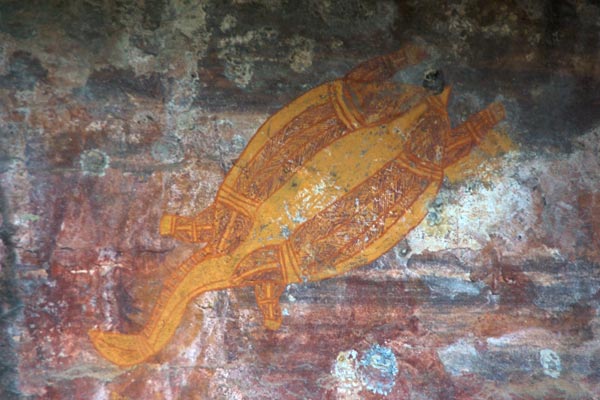
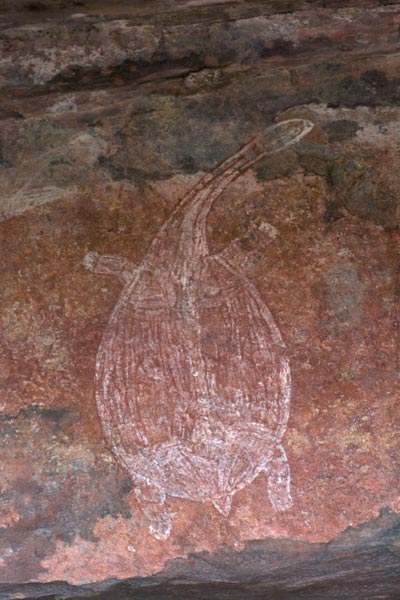
Here’s the scenery from Ubirr, the location of the two turtle paintings above.
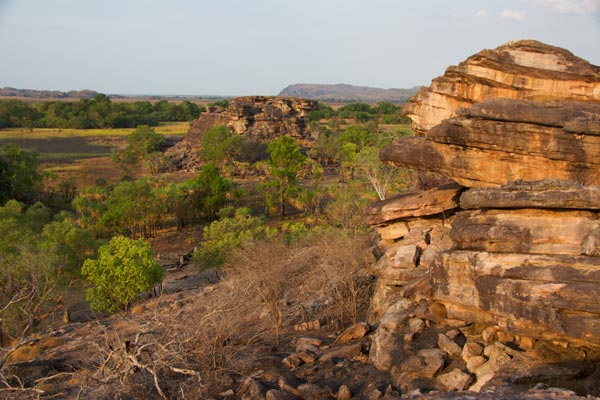
So we didn’t see any frillies in Kakadu, but we saw a nice variety of other wildlife. Here’s a friendly agamid near the Bowali Visitors Center. I believe this is Diporiphora albilabris (White-lipped Two-lined Dragon).
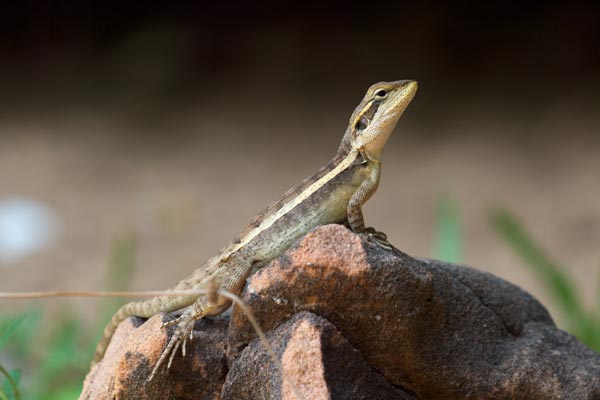
We saw a couple of dingos, but they were not as friendly as the dragon.
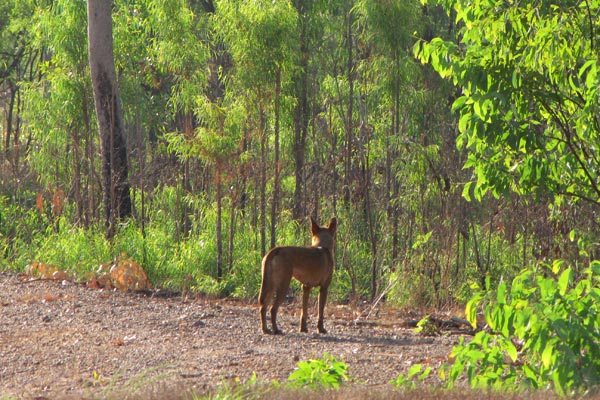
I photographed this dragon near Ubirr. I believe this one is Amphibolurus gilberti. They’re called “Ta-Ta Lizards” due to a behavior where the lizard waves a front leg around a couple of times just before racing into the distance. It reminds me of the behavior of our Zebra-tailed Lizards where they wave their tails from side to side before similarly racing into the distance. I had heard about this behavior and was fully expecting every dragon we encountered to give us a friendly wave goodbye. However, it turns out they do this only occasionally. I saw at least thirty Amphibolurus race into the distance, but only three of them gave me a wave.
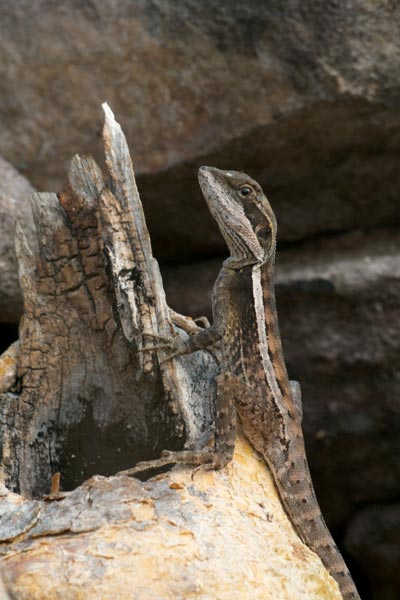
One late afternoon as dusk was approaching I spotted another agamid on a termite mound across the road from where we were driving. I hopped out and got a couple of hand-held (and thus somewhat fuzzy) photos without actually getting a very good look at the lizard. I assumed at the time that it was a young Amphibolurus of one or the other difficult-to-distinguish species, but realized after looking at the photos back at home that it was a different genus entirely, and probably an adult. I'm pretty certain this is a Diporiphora bilineata (Two-lined Dragon).
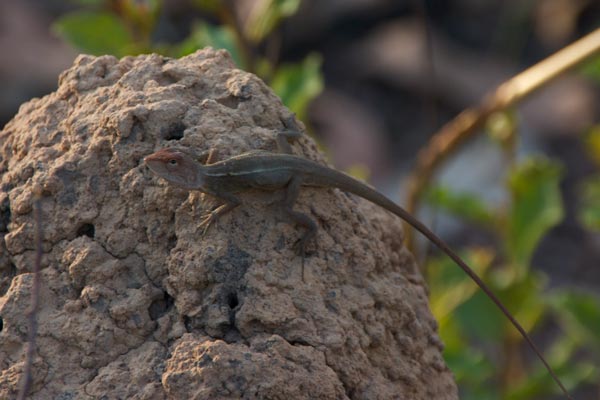
Our favorite Top End invertebrates were medium-sized ants called Oecophylla smaragdina with red heads and thoraxes and green abdomens, They are typically called simply “Green Ants” but that name seems misleading and doesn’t fully capture their odd appearance. To address these problems, we called them “Green-butted Ants”. We were entertained by their two-colored appearance and their tenacity. Often, while accidentally leaning against some foliage to take a photo of a herp, I would come away with a green-butted ant or two hanging onto my neck or arm. Fortunately they are the biting sort of ant rather than the stinging sort of ant so when they are hanging onto you it’s only a minor annoyance.
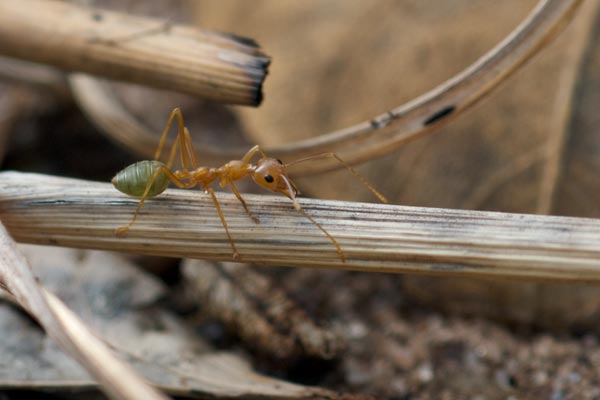
Many of the pockets of monsoon forest in the Top End are occupied by large colonies of large fruit bats. These are Pteropus alecto (Black Flying Foxes).
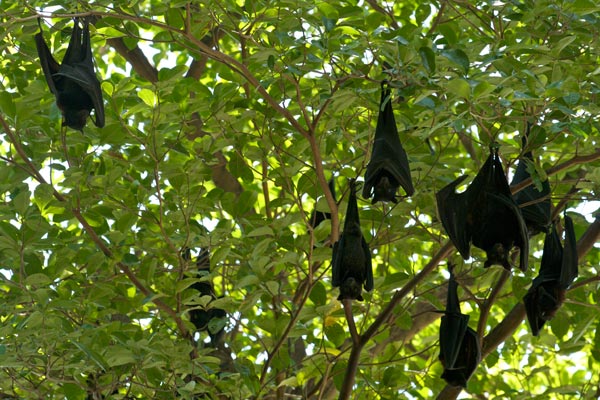
And speaking of black mammals, this is a Macropus bernardus (Black Wallaroo). I think it is saying “What’s up, doc?”.
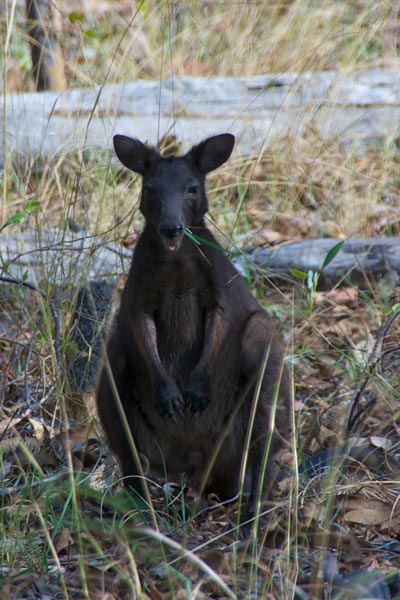
This kind of beautiful rocky habitat is where Black Wallaroos live.
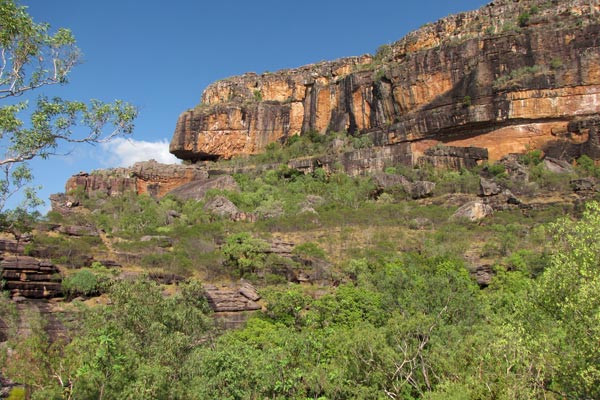
Clearly, when we were in Kakadu we had no choice but to spend a couple of nights in this hotel.
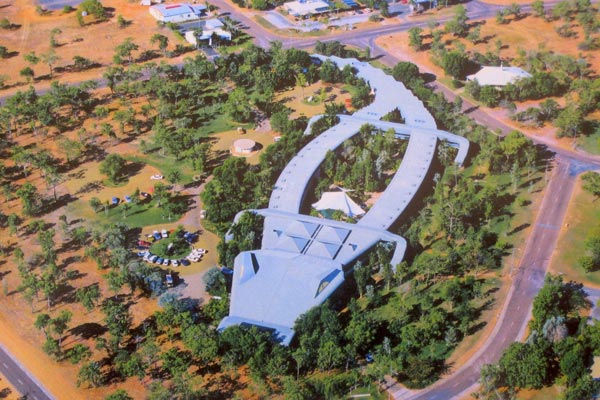
There was a disappointing dearth of crocodiles at the Gagudju Crocodile Hotel. In fact, the only herps I saw
on the grounds were a few Amphibolurus and some more friggin’ Hemidactylus frenatus.
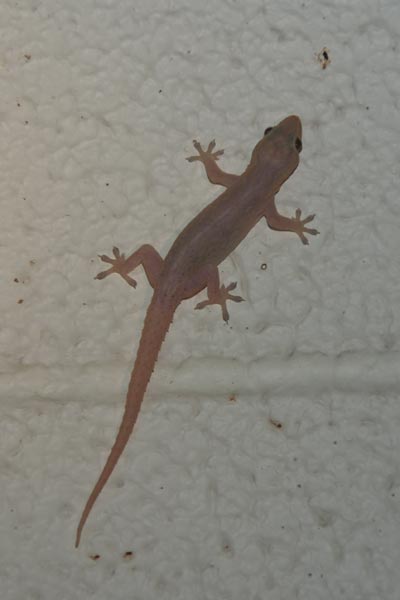
The dry weather while we were at Kakadu meant that there weren’t too many herps moving at night. We did see a couple of small snakes on the road, but they both escaped without being clearly seen or photographed. In addition to the omnipresent Cane Toads, we saw a couple of different frog species on the Bardedjillidji trail near Ubirr. At the time I assumed that they were the same species, because they were of similar size, shape, and color, and found within a few feet of each other. But the photos and reference books told me otherwise.
This one is Litoria watjulumensis (Watjulum Frog).
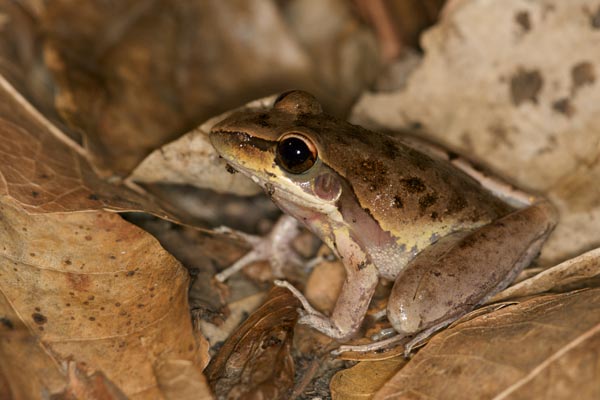
And this less-patterned one is either Litoria pallida (Pale Frog) or Litoria tornieri,
but I’m going with L. pallida unless you tell me otherwise.
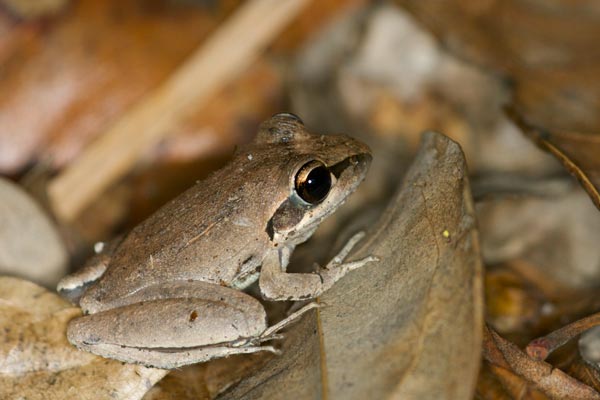
Most of the eyeshine that reflected back at our flashlights was green spider eyeshine. This spider reflected some big green spider eyeshine and many pinpricks of tiny baby green spider eyeshine.
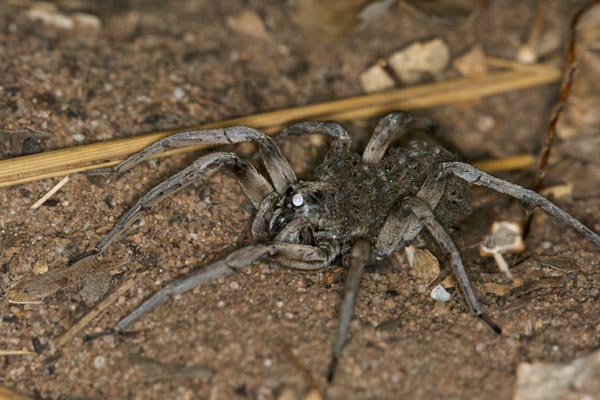
This friendly scorpion was poised right in the center of the trail. It doesn’t look very friendly in this picture but that’s only because I riled it out of its quiescent curled-up state to assure Mary that it was indeed alive.
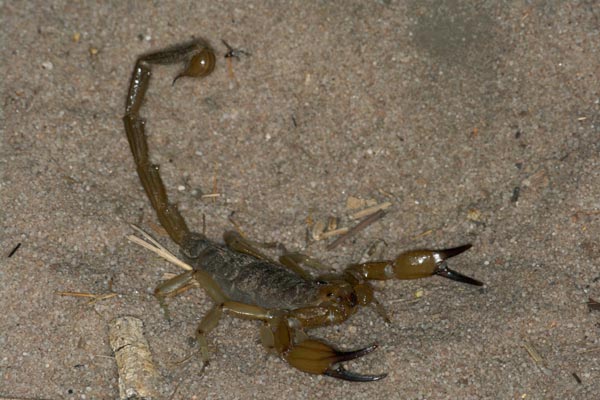
The green-butted ants never sleep, much to the chagrin of this hapless cicada that never got its chance to experience winged freedom.
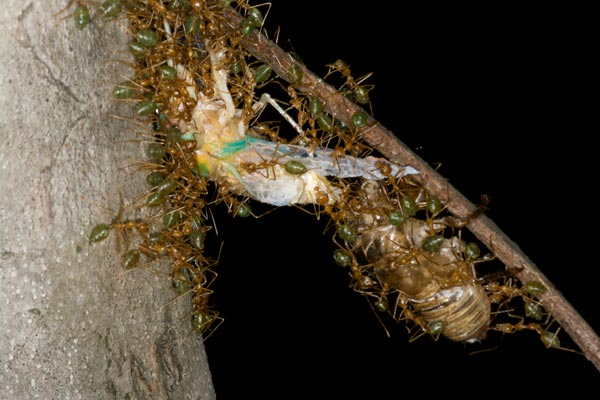
After we waved goodbye (Amphibolurus gilberti-style) to the Crocodile Hotel, we headed to the Cooinda lodge in order to take a cruise on the billabong and finally get a good look at some crocodiles. Near the lodge entrance was another Amphibolurus gilberti, which rather rudely did not wave hello.
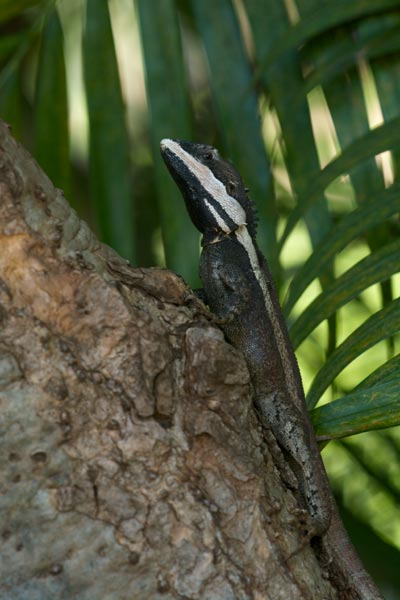
While eating dinner at the Cooinda lodge outdoor restaurant, there were some more Hemidactylus frenatus crawling about. By this point I had stopped bothering to try to get good photos of the introduced Asian geckos, so I used a tiny digital point-and-shoot from about two inches away, giving that ever-attractive fisheye look.
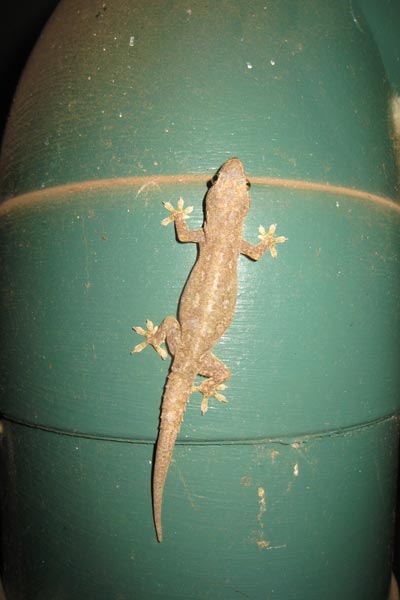
On an afternoon walk around the Cooinda grounds we came across this ex-Cane Toad whose eyes had apparently been too big for its stomach.
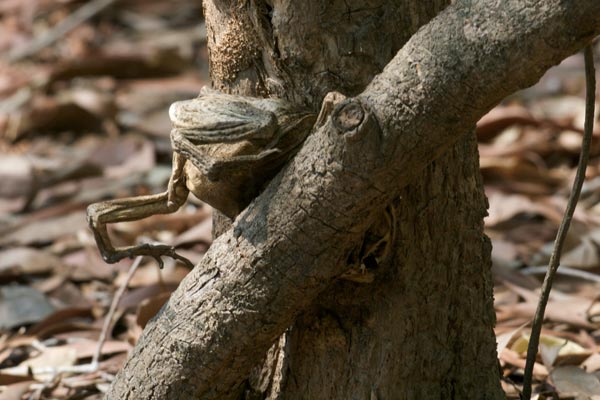
We never tired of seeing wild parrots, like this Cacatua galerita (Sulfur-crested Cockatoo).
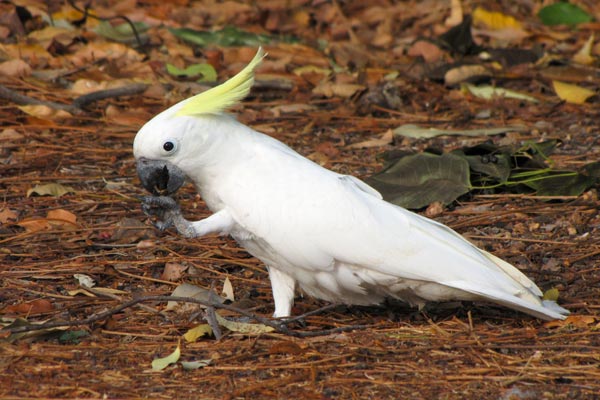
Throughout the Top End, the government has done their best to keep you away from the crocodiles.
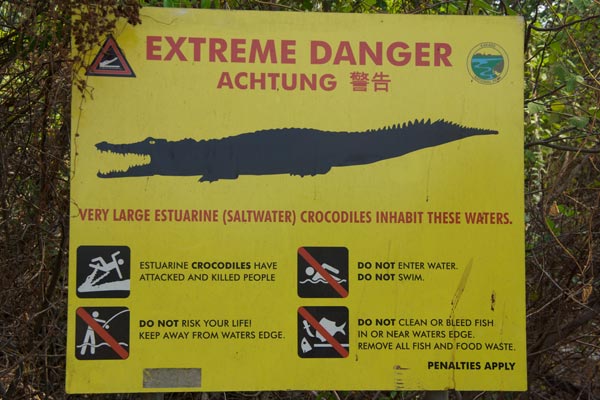
The main point of staying at Cooinda Lodge is to take a cruise on the adjacent Yellow Water Billabong, in order to see crocodiles from up close. What would the government think? Should I tell them?
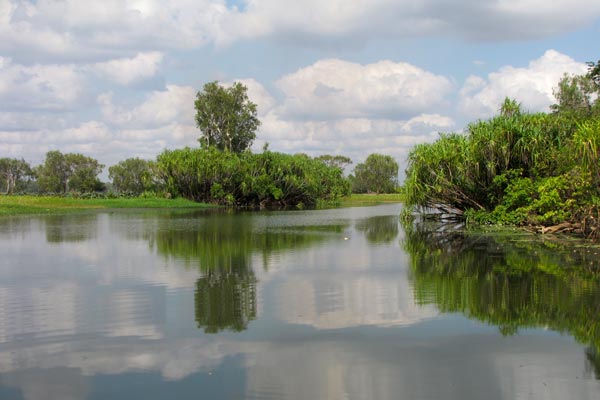
Happily, there were in fact crocodiles to be seen on the cruise. We didn’t see any of the smaller, safer Crocodylus johnstoni (Freshwater Crocodiles), but we saw plenty of the larger, more dangerous Crocodylus porus (Estuarine Crocodiles or Saltwater Crocodiles). None of us were eaten by any of them, despite the Achtung signs. But then we did not enter the water, swim, or clean or bleed fish in or near waters edge.
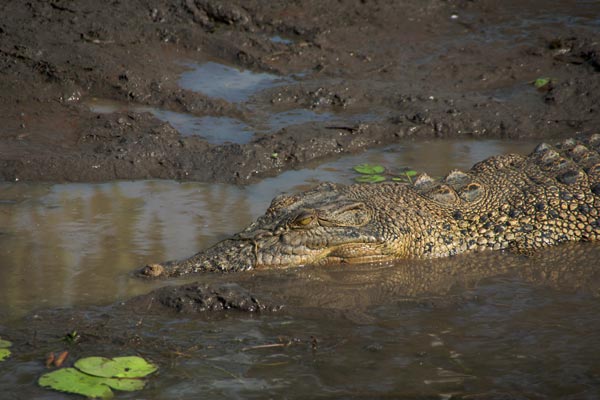
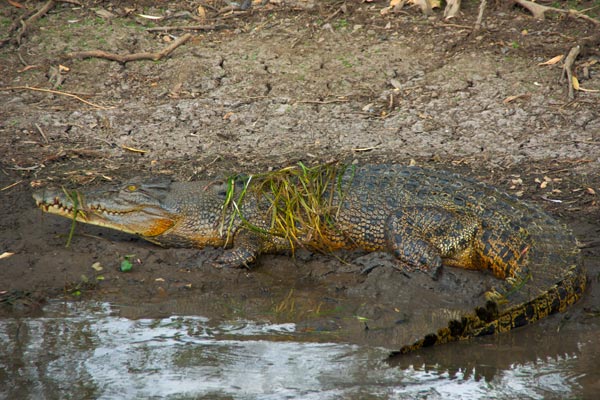
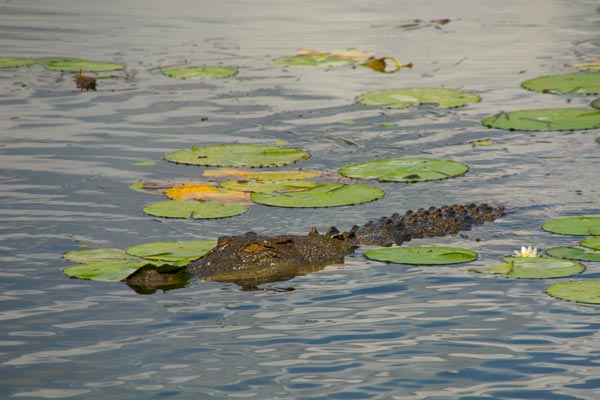
We also saw many birds on this cruise, including some pretty good ones. This large-footed fellow is Irediparra gallinacea (Comb-crested Jacana or Lily Trotter).
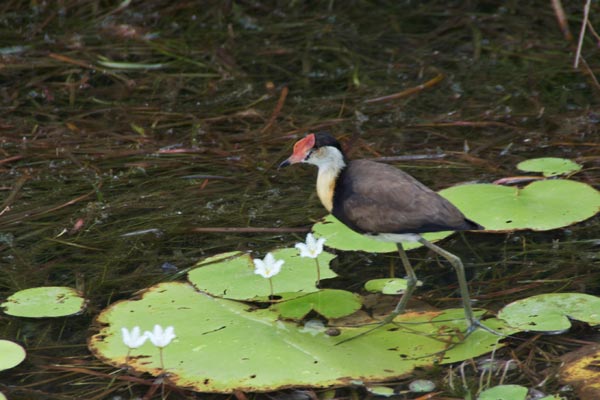
The two most numerous bird species are mixed together here. The big ones are Anseranas semipalmata (Magpie Geese), which gather by the thousands in the dry season, and the little ones are Dendrocygna eytoni (Plumed Whistling-Ducks).
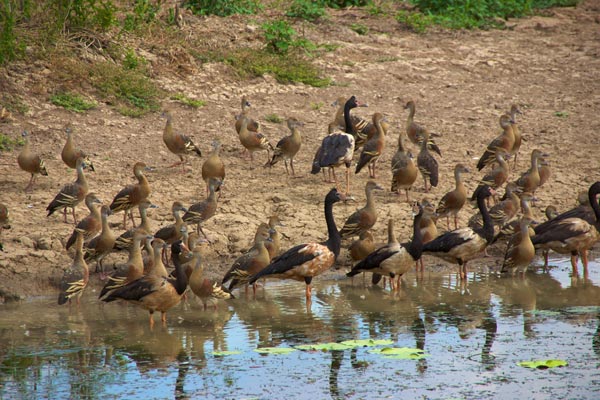
Speaking of whistling, this is a Haliastur sphenurus (Whistling Kite). I think it’s more yelling than whistling here.
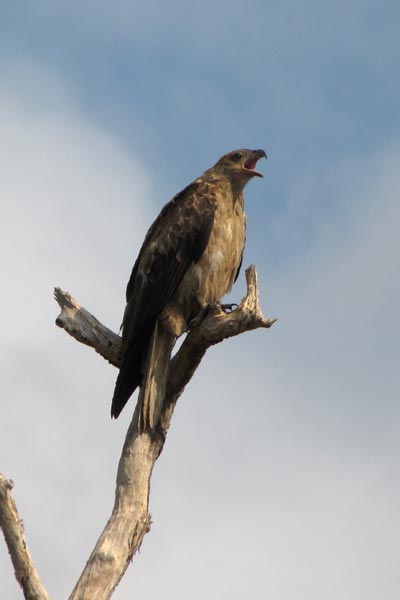
The prize for prettiest Yellow Water bird went to this Alcedo azurea (Azure Kingfisher).
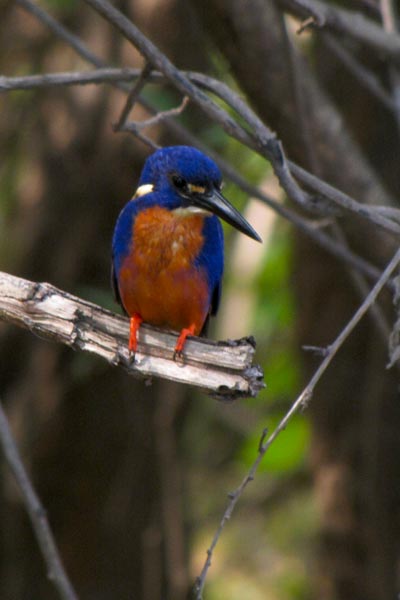
On our last morning in the Kakadu area, we found two small ground-dwelling rust-colored agamids. My best guess is that these are Diporiphora magna (Yellow-sided Two-lined Dragons), but I’m not too confident. It’s possible that this is simply a very different color variation of Diporiphora bilineata than the one we saw earlier on a termite mound, but there seem to be some morphological differences as well, such as the clusters of white spiny scales on the throat and shoulders.
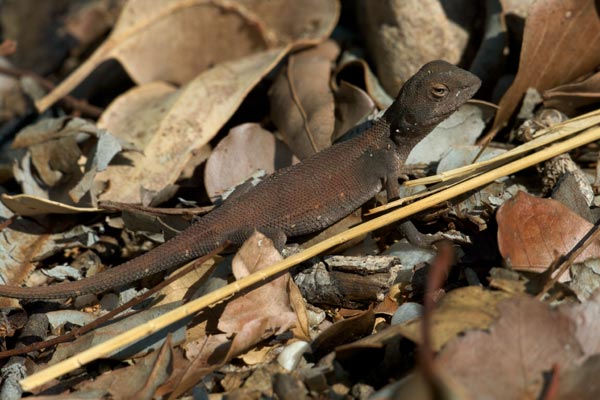
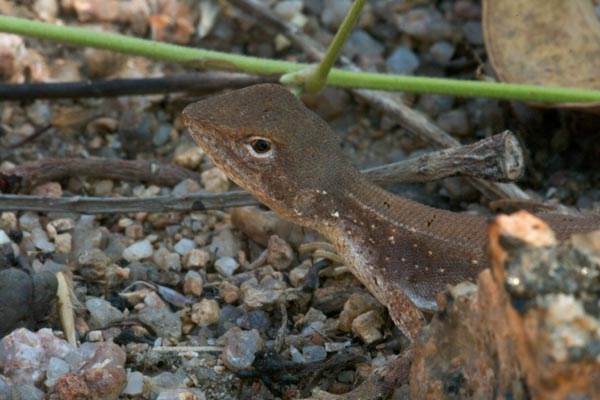
Here’s the rocky habitat just to the west of Kakadu, where we saw the second dragon pictured above.
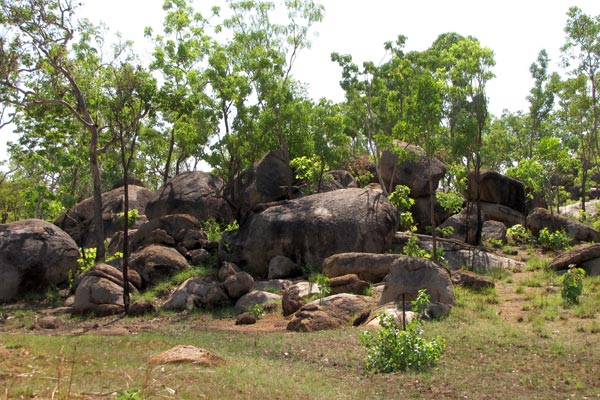 Next: Litchfield
Next: Litchfield